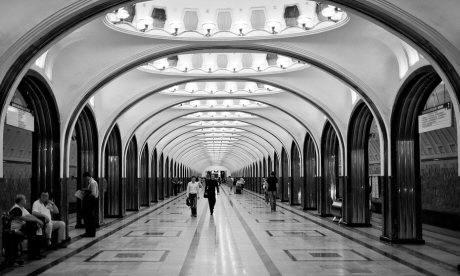
From the deadly snake island to Coca-Cola's top secret recipe vault, here's the world's ten most interesting places you'll never get to visit
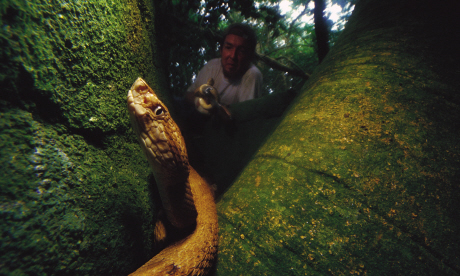 1. Snake Island
1. Snake IslandLocation: Atlantic Ocean, off the coast of São Paulo State, Brazil
Nearest population hub: São Paulo
Secrecy overview: Access restricted: a snake-infested island off-limits to visitors
Lying just off the coast of Brazil, the island of Ilha da Queimada Grande is populated by a unique and highly venomous species of lancehead viper. An ophidiophobic’s vision of hell, only doughty scientists and crazed adventurers dare set foot on its ground.
Snake Island is home to a vast colony of golden lancehead pit vipers (Bothrops insularis), among the most poisonous snakes on the planet. The golden lancehead is only to be found on this one particular island, so it is understandably rather protective of its territory. Its venom is about five times as potent as that of its cousin, the fer-de-lance, which is itself responsible for more South American snakebite deaths than any other species.
Just getting to the island, which covers about 45 hectares (110 acres), takes considerable determination. It is first necessary to cross a 30-kilometres (19-mile) stretch of choppy water from the coast of the Brazilian state of São Paulo, and there are few local sea captains willing to make the trip. Once at the island, there is no beach to speak of, and access is via a steep, rocky slope covered in hand-mincing barnacles. All of which is somewhat academic, given that the Brazilian Navy expressly forbids civilians from landing there anyway. Only accredited scientists are occasionally given special dispensation to visit.
There are at least 5,000 snakes writhing around the place, with conservative estimates suggesting one for every square metre: they have even taken over a now-defunct lighthouse. Being lighthouse keeper here surely ranked high among the worst jobs in the world. Legend has it that the last keeper lived there with his family until snakes got into their cottage. As they tried to flee, they were taken out one by one by vipers dangling from the branches of overhanging trees. Myth or not, the best advice is to leave their home as it is – a secret serpentine paradise.
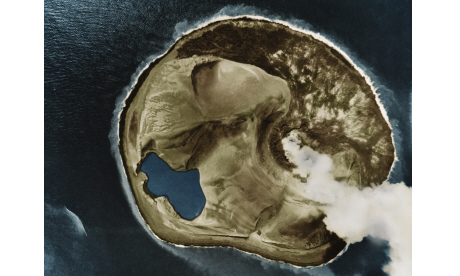 2. Surtsey
2. SurtseyLocation: South of the Icelandic Coast
Nearest population hub: Reykjavik, Iceland
Secrecy overview: Access restricted: arguably the world’s most pristine natural habitat, unspoilt by human intervention
The North Atlantic island of Surtsey is among the planet’s youngest places, having emerged from the sea during an underwater volcanic eruption that lasted from 1963 until 1967. The territory was quickly declared a nature reserve, and only a small band of accredited scientists has ever been allowed to land there to record how life on Earth spontaneously develops.
The infant island lies around 20 kilometres (12.5 miles) south-west of Heimaey, the largest of the Westman Islands. The first indications of a volcanic eruption underway here came on 14 November 1963, when changes in the surrounding water temperature, arising plume of smoke and the smell of hydrogen sulphide were all observed. However, the eruption is thought to have begun several days earlier, some 130 metres (430 ft) beneath the sea.
By the time the eruptions came to an end in June 1967, Surtsey covered an area of 2.7 square kilometres (1 sq mile). It has been estimated that the wind-battered island will not be returned to the sea before 2100 at the earliest, and it may survive for several centuries. However, two smaller sister islands that appeared during the original eruption were soon eroded to nothing by the Atlantic waves.
Landing on the island is strictly forbidden, unless you are a scientist who has been awarded a permit by the Surtsey Research Society, which supervises all activity on the island on behalf of the Icelandic Environment and Food Agency. Diving in the island’s environs is not allowed, nor is disturbing any of its natural features, introducing any organisms, soils or minerals, or leaving any waste. It is also forbidden to discharge a firearm within 2 kilometres (1.2 miles) of the coast.
The island was inscribed on UNESCO’s list of World Heritage Sites in 2008. By 2004, the assorted life recorded on the island included 69 vascular plants, 71 lichen, 24 fungi, 14 bird species and 335 species of invertebrates. In 2009 it was widely reported that a Golden Plover was found nesting on the island, the first wading bird to do so.
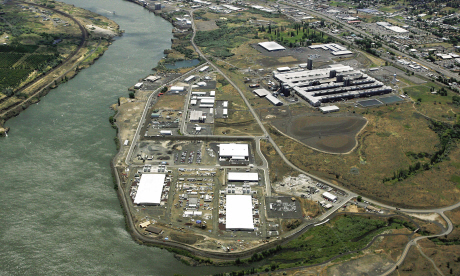 3. Google Data Centre, The Dalles
3. Google Data Centre, The DallesLocation: Wasco County, Oregon, USA
Nearest population hub: Portland, Oregon
Secrecy overview: High-security location: Google’s first purpose-built data centre
Google is one of the world’s leading Internet companies, helping to shape modern culture while making an awful lot of money. As proprietors of perhaps the world’s leading search engine, the business requires vast banks of computer servers to keep things working. Its enormous Data Center at The Dalles was built amid great secrecy at a cost of US$600 million and opened in 2006.
When Google came to construct its first custom-designed facility, a site on the Columbia River not far from the Dalles Dam offered not only suitable land on which to build and a local population to work there (employees number around 200), but also the possibility of plentiful and green hydroelectric energy. A business such as Google inevitably consumes enormous quantities of electricity, and the chance to build a more environmentally friendly facility fitted in neatly with the company’s declared motto: ‘Don’t be evil’.
The Data Center, codenamed ‘Project 02’ in its early days, was shrouded in secrecy when it opened – even visiting journalists were required to sign confidentiality agreements. Although the secrecy level has since declined, security – both of the site itself and the data it contains – remains of paramount importance.
A full-time Information Security Team works to ensure the integrity of electronically held information, while the centre itself is surrounded by a perimeter fence that is patrolled by guards and constantly under closed- circuit surveillance. While Google wishes to make the world’s information universally accessible, it clearly harbours no such ambitions for its own data centres.
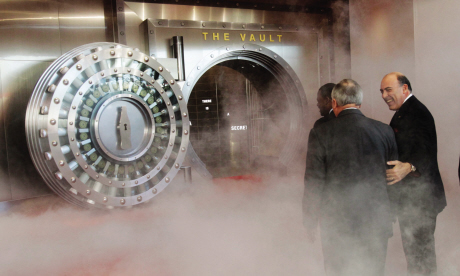 4. Coca-Cola’s Recipe Vault
4. Coca-Cola’s Recipe VaultLocation: Coca-Cola World, Atlanta, Georgia, USA
Nearest population hub: Atlanta, Georgia
Secrecy overview: High-security location: repository of the secret recipe for the iconic beverage
Coca-Cola might well be the world’s favourite drink, with a reported 1.7 billion servings sold every day. Such is the mythology that has grown up around the Coca-Cola brand that its recipe is perhaps the most famous trade secret in history. Jealously guarded since first being committed to paper in the early part of the 20th century, it now resides in an extraordinary vault that doubles as a tourist attraction.
The Coca-Cola story begins in Atlanta, Georgia, in 1886 with a chemist called John Pemberton, creator of delights such as French Wine Coca (a heady mix of wine and cocaine) and Pemberton’s Indian Queen Magic Hair Dye. Facing the spectre of prohibition, he set upon devising a non-alcoholic version of his Wine Coca. The result was a brownish syrup that he intended to market as a sort of ‘cure-all’. Quite serendipitously, however, a batch of this syrup was mixed with carbonated water, creating the drink that is known and loved today.
Company legend has it that only a tiny band of people know the recipe, and they are not allowed to travel together for fear of an accident in which the formula might be lost forever. In December 2011, the recipe was retrieved from its vault at SunTrust Bank and, under high security, was transferred a few minutes down the road to a new purpose-built vault at the company’s World of Coca- Cola exhibition.
In front of the watching media, a metal box believed to contain the recipe was placed into a newly constructed two-metre (6.6-ft) high steel vault. This vault is never opened, and is protected by a barrier that keeps the viewing public several metres away. The area is kept under surveillance, with guards on hand to deal with any troublemakers. By the door stands a keypad and a hand-imprint scanner, although officials have refused to confirm if these are simply for show.
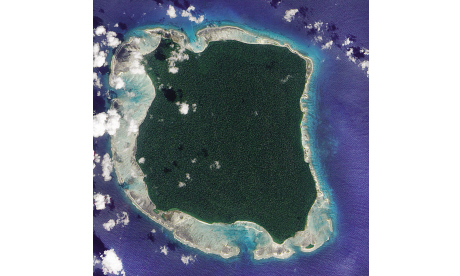 5. North Sentinel Island
5. North Sentinel IslandLocation: Andaman Islands, Bay of Bengal
Nearest population hub: Port Blair, Great Andaman
Secrecy overview: Access restricted: a remote island whose people reject contact with the outside world
North Sentinel Island, which covers only 72 square kilometers (28sq miles), has an indigenous population of somewhere between 50 and 400 Sentinelese, one of the last groups on earth to have resisted contact with the modern world. Jealously protective of their isolation, any attempt by outsiders to land on the island is likely to result in a hail of arrows.
North Sentinel lies to the west of the southern tip of South Andaman Island and is one of 572 islands in an 800-kilometre (500-mile) arc. The island lacks any natural harbours and is surrounded by uncharted coral reefs that have largely kept out visitors as well as keeping in the Sentinelese, whose own rudimentary boats are suited only to calm lagoons.
Tentative attempts from the 1960s to make contact with the Sentinelese met with limited success. Incidents such as the one in 1974 when a visiting documentary crew was attacked and the director suffered an arrow to the thigh were not uncommon. After many years of regular landings and gift offerings, the first recorded friendly contact was made in 1991.
However, similar schemes with other native peoples of the islands (including the Great Andamanese and the Jarawa) had ended disastrously when those populations were decimated by exposure to common but unfriendly diseases. Under pressure from groups arguing that the Sentinelese should not be forced into contact, the government gave up on its contact programme in 1996.
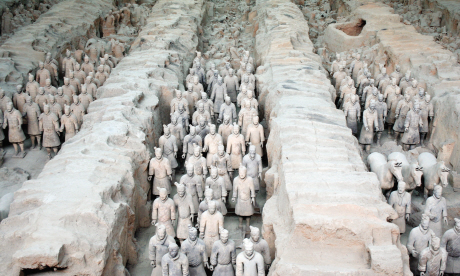 6. The Tomb of Qin Shi Huang
6. The Tomb of Qin Shi HuangLocation: Shaanxi Province, China
Nearest population hub: Xi’an
Secrecy overview: Site of historic mystery: the legendary tomb of China’s first emperor
From 221 BC, Qin Shi Huang ruled over a vast empire of once-disunited states, laying the platform for the modern Chinese state. Keen to build a suitable monument to himself for after his death, he ordered the construction of one of history’s most spectacular mausoleums. While parts of the complex – including the incredible Terracotta Army – have been revealed in recent decades, much of it still lies buried.
Today it is roughly equivalent in size to the Great Pyramid at Giza, but it was considerably larger in Qin Shi Huang’s time. It is located about 35 kilometres (22 miles) east of Xi’an, between the Lishan Mountains and the River Wei. The Emperor decreed that an area several kilometres wide around the mountain was to be given over to his grand project. The mausoleum complex was designed to echo the plans of his great dynastic capital, Xianyang, with his ‘palace’ at the centre and the ‘city walls’ enclosed by outer walls. We have a relatively contemporary account of the tomb’s construction in the form of Sima Qian’s Records of the Grand Historian, written about a hundred years after the Emperor’s death. In it, Sima Qian reports that 700,000 workers were tasked with building the tomb.Subsequent archaeological investigation has revealed around 180 different sites of interest within the tomb complex, from towers and gardens to offices. New rooms, pits and other features are regularly added to the list. The tomb itself is believed to be encased in copper, residing within a purpose-built, treasure- filled chamber. To deter intruders, the Emperor had the mausoleum extensively booby-trapped. A network of crossbows is said to be rigged to fire at anyone who manages to break in.
Requests by academic teams to excavate the main tomb area have so far been resisted by the Chinese authorities, not least because earlier attempts at excavating imperial tombs ended badly as a result of poor working methods. For the foreseeable future at least, it seems the Emperor can rest in peace.
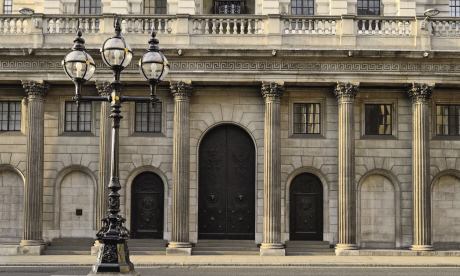 7. Bank of England Vaults
7. Bank of England VaultsLocation: Beneath Threadneedle Street in London, England
Nearest population hub: London
Secrecy overview: High-security location: the safest place to store gold bullion in Europe
The central bank of the United Kingdom, the Bank of England was founded in 1694. Since 1734, it has been based at Threadneedle Street in the heart of the City of London, and from 1797 it has had the nickname of the Old Lady of Threadneedle Street. Beneath its floors are cavernous vaults that store not only the gold reserves of the UK but also the wealth of countless other countries.
As of 2011, the UK government held gold reserves of around 312 tonnes (1 million troy ounces) in the Bank of England, which roughly equates to 23,000 bars of 24-carat gold. Billions of pounds worth of gold belonging to other countries is held here too, often deposited by governments who don’t have access to a suitably large and secure vault in their own nation.
The vaults themselves are vast, with a floor area large enough to accommodate the pitch of Wembley Stadium four times over with room to spare. The walls are designed to withstand bomb blasts, and for this reason the vaults took on the role of air raid shelter for bank employees during the Second World War.
Access these days is via huge doors that are opened by keys 90 centimetres (3 ft) in length (not the sort of thing to slip into a pocket unnoticed). As the key is inserted into the lock, the person attempting entry must give a password via a microphone next to the doors. The identity of staff who work in the vaults is a closely guarded secret in order to lessen the chance of an employee’s family being kidnapped and the employee being blackmailed into granting access.
While all that gold is securely tucked away in the Bank’s vaults, visitors to the Bank’s museum are given the opportunity to handle a gold bar for themselves.
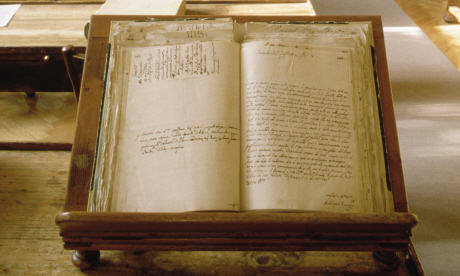 8. Vatican Secret Archives
8. Vatican Secret ArchivesLocation: Vatican City
Nearest population hub: Rome, Italy
Secrecy overview: Access restricted: the historical archives of the Roman Catholic Church
The Vatican Secret Archives is the repository for many of the most important documents related to the history of the papacy and the Roman Catholic Church. Although open to accredited researchers, much of the Archive’s contents remains off-limits: critics suggest it hides evidence of numerous dark episodes from the past.
In reality, the word Secretum in the Archive’s Latin name Archivum Secretum Vaticanum has more of a sense of ‘privacy’ than ‘secrecy’ – that is to say, the Archive is the papacy’s private possession. Today it contains somewhere in the region of 85 kilometres (53 miles) of shelving, holding materials that date back to the eighth century.
It was Pope Paul V, in 1611, who commanded the construction of what became the Secret Archives, now located next to the Vatican Museums. The Archives opened on 31 January 1612, with Baldassarre Ansidei as their first custodian. In 1810, Napoleon Bonaparte transferred many of the contents to Paris, but most were returned by 1817 following Napoleon’s fall from power. In 1881, Pope Leo XIII took the momentous step of opening up the Archives for scholarly research.
Among the Archive’s treasure are documents relating to the bloody period of the Inquisition. It also houses King Henry VIII of England’s petitions for divorce from Catherine of Aragon. There is also allegedly literature relating to the trial of Galileo in 1633 on charges of heresy (the papacy not being overly keen on his insistence that the Earth was not at the centre of the Universe), as well as a letter from Michelangelo complaining about late payment for his painting and decorating work.
All researchers wanting access must have a university degree or equivalent, and members of the clergy need a licentiate degree or PhD. Before access is granted, a formal application must be made, accompanied by a letter from a recognised institute or qualified individual in the field of historical research. If there is already someone researching in your particular area of interest, you’ve probably had it.
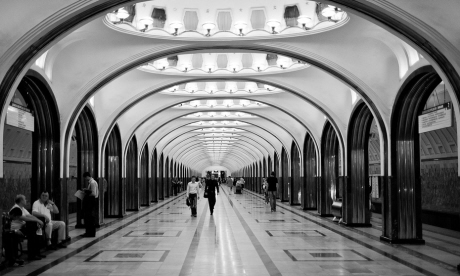 9. Moscow Metro-2
9. Moscow Metro-2Location: Beneath Moscow, Russia
Nearest population hub: Moscow
Secrecy overview: Existence unacknowledged: a secret underground metro system created in the Soviet era
The Cold War was littered with tales of ingenious subterfuges and outrageous hoodwinking, but few stories can better that which tells of an entire underground secret transport system for use by government officials, built beneath the streets of Moscow and entirely separate from the official Metro. The Kremlin and FSB (Russia’s security service) refuse to confirm or deny its existence to this day. A variety of dates for the beginning of its construction have been suggested, the earliest of which is 1947.
Advocates of Metro-2 contend that it has up to four lines, the longest stretching for some 60 kilometres (37 miles), at a depth of between 50 and 200 metres (165 and 660 ft) below the city. The tunnels are said to be virtually the same size as the official Metro, but there is no third rail, suggesting that its trains were diesel powered. Rails are recessed into concrete, perhaps to allow the possibility of other vehicles (cars, trucks or tanks, for instance) using the tunnels.
Of course, there are plenty of cynics ready to pour cold water on the idea of such an elaborate network. Firstly, they argue, the creation of such a system would require huge amounts of manpower and the excavation of unimaginable amounts of rubble – so where did all the rubble go, never to be spotted by a passing spy satellite? Moscow also has a shallow water table, with groundwater an ongoing problem for the official Metro lines, let alone the even deeper Metro-2.
In recent years several former Soviet officials have all but confirmed the existence of something resembling Metro-2. Many, though, have pointed out that if the system does actually exist, it is likely to need significant repairs and upgrading to turn it into a practically useful system today.
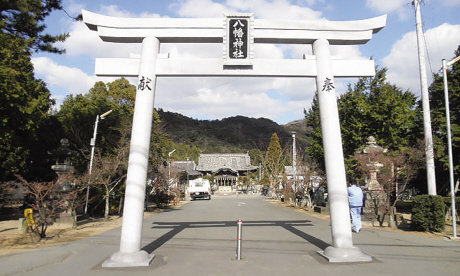 10. Ise Grand Shrine
10. Ise Grand ShrineLocation: Honshu, Japan
Nearest population hub: Ise
Secrecy overview: Access restricted: the most sacred shrine of the Shinto religion
Claiming some 120 million followers in Japan, Shinto is a Japanese system of beliefs and traditions that encourages devotion to spirits but has no central ‘god’ figure. The shrine at Ise is so sacred to Shintoism that access to the inner sanctums is strictly regulated – in fact, only the high priest or priestess can enter the shrine, and he or she must come from the Japanese Imperial family.
The city of Ise on the central Japanese island of Honshu has a population approaching 150,000 but plays host to more than six million pilgrims each year. It is home to a complex of more than 120 Shinto shrines connected to two main shrines about 6 kilometres (3.8 miles) apart: the Imperial Shrine (Kotai Jingu), also known as the Naiku, or Inner Shrine, and the Toyouke Shrine, or Geku (Outer) Shrine. Naiku is dedicated to Amaterasu Omikami (the Sun Goddess and purported ancestor of the Japanese Imperial family) while Geku venerates Toyouke Omikami (the Goddess of Agriculture).
The Inner Shrine lies in the shadow of Mount Kamiji and Mount Shimaji, next to the Isuzu River. It sits amid a forest thick with Japanese cedars and cypress trees. According to the eighth-century Nihon Shoki (Chronicles of Japan), the shrine was built around 2,000 years ago. Both the Naiku and Geku shrines are constructed from hinoki (Japanese cypress) wood and their roofs are thatched with kaya grass. The main Naiku shrine building measures some 11 metres by 5.5 metres (36 x 18 ft) and has a raised floor. Every 20 years since ad 692, the shrine has been completely rebuilt on one of two plots of land immediately adjacent to each other.
Access to the Naiku comes via the Uji Bridge that traverses the Isuzu. At either end of the bridge are spectacular tori (traditional Japanese) gates. The main structures of both shrines are surrounded by high fences that allow onlookers only a glimpse of their thatched roofs. A no-photography policy is strictly enforced. Pilgrims, who are expected to wash their hands and mouths with water from a ritual pool, may offer prayers at a large gate nearby but can proceed no further. That is, of course, unless you can prove your familial links to the Imperial dynasty and talk your way into the job of high priest or priestess.
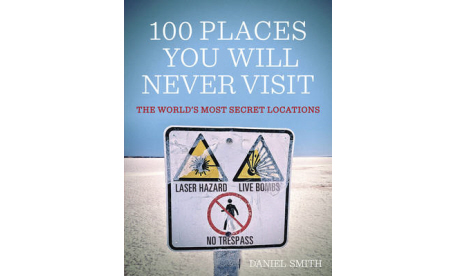 These ten weird and wonderful locations have been taken from 100 Places You Will Never Visit: The World's Most Secret Locations (Quercus, £14.99). Learn more about the world's secret places you don't know about and couldn't visit even if you wanted to. The book is available online – order your copy now.
These ten weird and wonderful locations have been taken from 100 Places You Will Never Visit: The World's Most Secret Locations (Quercus, £14.99). Learn more about the world's secret places you don't know about and couldn't visit even if you wanted to. The book is available online – order your copy now.